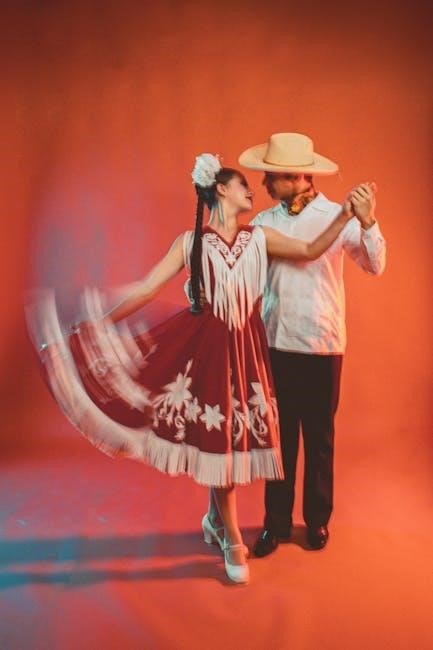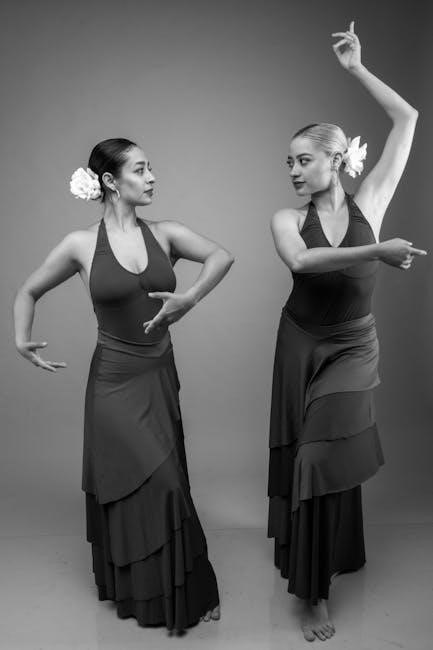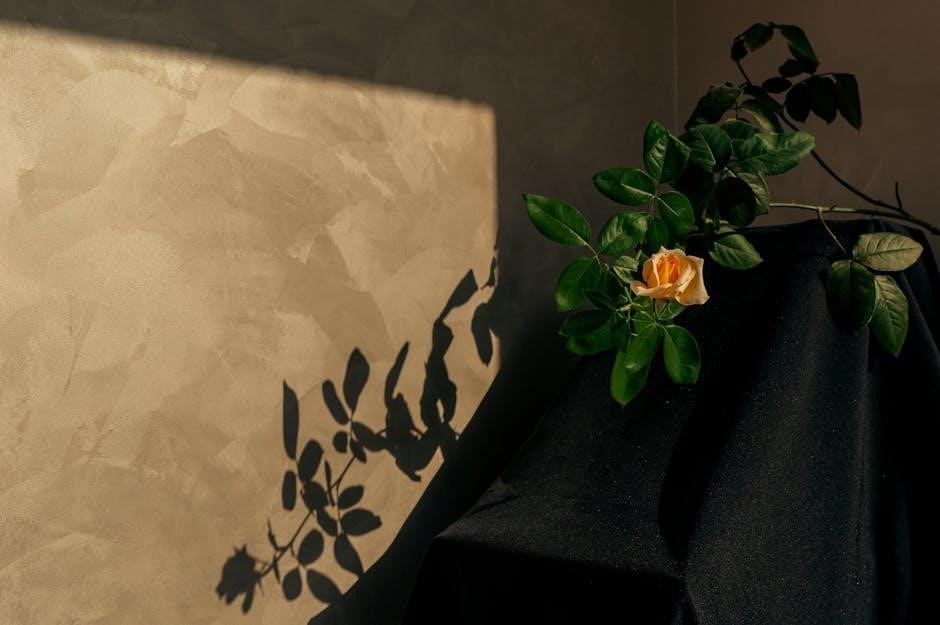
flower duet pdf
Flower Duet PDF: A Comprehensive Guide
Embark on a musical journey exploring the “Flower Duet” through readily available PDF sheet music. Discover resources for piano, flute, and more. Dive into arrangements tailored for various skill levels, unlocking the beauty of Delibes’ masterpiece.
The “Flower Duet,” originally known as “Sous le dôme épais,” is a celebrated soprano duet extracted from Léo Delibes’ opera Lakmé. This enchanting piece, premiered in Paris in 1883, captures the essence of tranquility and beauty. It features Lakmé, the daughter of a Brahmin priest, and her servant, Mallika, as they gather flowers near a serene river.
The duet’s popularity extends beyond the opera house, with numerous arrangements available for various instruments, including piano, guitar, and flute. Its timeless melody and delicate harmonies have made it a favorite among musicians of all levels.
This guide provides a comprehensive overview of the “Flower Duet,” exploring its origins, musical structure, and available PDF sheet music resources. Whether you are a seasoned performer or a budding musician, this guide will help you discover the beauty and intricacies of this iconic piece. Explore the duet’s significance within Lakmé and find sheet music tailored to your skill level.
The Origins of the Flower Duet
The “Flower Duet,” or “Sous le dôme épais,” emerged from Léo Delibes’ opera Lakmé, a work steeped in Orientalist themes and set in British India. Delibes, a renowned French composer, crafted Lakmé as a vehicle for showcasing lyrical beauty and dramatic storytelling. Premiering in 1883 at the Opéra-Comique in Paris, the opera quickly gained popularity, largely owing to the exquisite “Flower Duet.”
The duet itself is situated within Act 1 of the opera, serving as a moment of respite and intimate connection between Lakmé and Mallika. As they venture to gather flowers by a river, their voices intertwine, creating a tapestry of melodic beauty. The scene provides contrast to the opera’s broader themes of cultural conflict and forbidden love.
Delibes’ musical genius shines through in the “Flower Duet,” capturing the serenity of the setting and the emotional bond between the two characters. Its enduring appeal lies not only in its melodic charm but also in its ability to transport listeners to a world of exotic beauty and delicate emotion. The duet became a standalone concert piece, transcending its operatic origins.
Lakmé: The Opera Context
To fully appreciate the “Flower Duet,” understanding its operatic context within Lakmé is crucial. Lakmé, composed by Léo Delibes, unfolds in British India, exploring themes of cultural collision and forbidden love. The opera centers on Lakmé, the daughter of a Brahmin priest, and her tragic romance with Gérald, a British officer. Their love story unfolds against a backdrop of religious and political tension.
The opera’s narrative delves into the clash between Eastern spirituality and Western colonialism, portraying the consequences of cultural misunderstanding and societal constraints. Lakmé’s devotion to her faith and her father’s unwavering commitment to protecting their traditions set the stage for a poignant and ultimately tragic tale.
The “Flower Duet,” occurring in Act 1, offers a brief moment of serenity amidst the unfolding drama. It showcases the bond between Lakmé and her servant, Mallika, as they engage in a peaceful activity. However, even this idyllic scene is tinged with foreshadowing, hinting at the impending conflicts that will disrupt Lakmé’s world and lead to her heartbreaking fate. The opera’s plot progresses as the characters lives become more and more intertwined and complicated.
Characters: Lakmé and Mallika
The “Flower Duet” is brought to life by the captivating interplay between two central characters: Lakmé and Mallika. Lakmé, the opera’s titular character, embodies innocence, spirituality, and unwavering devotion to her Brahmin faith. As the daughter of a high priest, she carries the weight of tradition and the responsibility of protecting her culture from encroaching colonial influences. Her ethereal voice and delicate demeanor reflect her inner purity and vulnerability.
Mallika, Lakmé’s loyal servant and confidante, provides a contrasting yet complementary presence. She is characterized by her practicality, groundedness, and unwavering support for Lakmé. Mallika’s voice, often described as warmer and earthier than Lakmé’s, reflects her connection to the natural world and her role as a caretaker.
Their relationship transcends the typical mistress-servant dynamic, evolving into a deep bond of friendship and mutual respect. In the “Flower Duet,” their voices intertwine, creating a harmonious blend that symbolizes their shared experiences and emotional connection. The duet showcases their individual personalities while highlighting the strength of their relationship.
Act 1 Significance
Act 1 of Léo Delibes’ “Lakmé” is crucial, setting the stage for the unfolding drama and establishing the opera’s central themes. It introduces the audience to the exotic and vibrant world of colonial India, showcasing the clash between British rule and native traditions. The act unveils the sacred space of Lakmé’s Brahmin temple and the serene natural beauty of the surrounding gardens, creating a sense of mystique and spiritual significance.
The “Flower Duet” is a pivotal moment within Act 1, serving multiple purposes. Firstly, it establishes the close relationship between Lakmé and Mallika, highlighting their shared intimacy and emotional connection. Secondly, it foreshadows the impending conflict between love and duty, as Lakmé’s serene world is soon to be disrupted by the arrival of the British officer, Gérald.

Musically, the “Flower Duet” encapsulates the opera’s overall aesthetic, blending delicate melodies, lush harmonies, and evocative orchestration. It creates a sense of tranquility and ethereal beauty, contrasting with the underlying tension of the colonial setting. Act 1, therefore, lays the foundation for the tragic love story that will unfold, with the “Flower Duet” acting as a poignant symbol of innocence and impending loss.

Musical Analysis of the Flower Duet
The “Flower Duet,” formally known as “Sous le dôme épais,” offers a fascinating subject for musical analysis, revealing Delibes’ masterful compositional techniques. The piece is characterized by its gentle, flowing melody, primarily carried by the two soprano voices. This melody is structured in a stepwise manner, creating a sense of ease and naturalness.
Harmonically, the duet employs a rich and colorful palette, utilizing major and minor keys to evoke contrasting emotions. The harmonic progressions are largely diatonic, providing a sense of stability and grounding, yet Delibes incorporates subtle chromaticism to add moments of heightened expression. The instrumentation is delicate and refined, featuring flutes, strings, and harp, which contribute to the piece’s ethereal quality.
Rhythmically, the “Flower Duet” is characterized by its simple and unhurried nature. The use of flowing eighth and quarter notes creates a sense of forward motion without feeling rushed or frantic. This rhythmic simplicity allows the listener to focus on the beauty of the melody and the interplay between the two voices. The overall form is strophic, with each verse building upon the previous one, creating a cumulative effect of serene beauty.

Melodic Structure
The melodic structure of the “Flower Duet” is a testament to Delibes’ genius, showcasing a blend of simplicity and sophistication. The primary melody, beautifully shared between Lakmé and Mallika, is characterized by its stepwise motion, creating a sense of lyrical flow. The melody unfolds with a gentle rise and fall, mirroring the natural undulation of a flowing river.
The duet form allows for a call-and-response interaction between the two voices, with each soprano echoing and embellishing the phrases of the other. This creates a sense of intimacy and connection, drawing the listener into the world of Lakmé and Mallika. The melody is primarily diatonic, remaining within the key and creating a sense of stability.
However, Delibes subtly introduces chromaticism, adding moments of harmonic color and emotional depth. These chromatic alterations enhance the expressiveness of the melody, highlighting the characters’ feelings as they gather flowers by the river. The melodic lines are carefully crafted to be singable and memorable, contributing to the duet’s enduring popularity. The overall effect is one of serene beauty and emotional resonance, making the “Flower Duet” a timeless classic.
Harmonic Progression
The harmonic progression of the “Flower Duet” is built upon a foundation of lush Romantic harmonies, creating a rich and evocative soundscape. Delibes employs a primarily diatonic harmonic vocabulary, grounding the music in a sense of tonal stability. The chord progressions are carefully crafted to support the melodic lines, enhancing their expressiveness and beauty.
He frequently uses major and minor chords, creating a balance of brightness and melancholy. The harmonic rhythm is generally slow, allowing the harmonies to unfold gradually and create a sense of serenity. Delibes also makes use of inversions, adding subtle variations to the harmonic color and creating a smoother voice leading.
One of the most distinctive features of the harmonic progression is the use of chromaticism. These chromatic chords add moments of surprise and emotional intensity, enhancing the overall expressiveness of the duet. Delibes skillfully uses these chromatic alterations to highlight key moments in the text, creating a deeper connection between the music and the drama. The harmonic progression is designed to be both beautiful and functional, providing a solid foundation for the melodies while also adding depth and color.
Instrumentation and Arrangements

The “Flower Duet” from Lakmé is celebrated for its adaptability to diverse instrumental settings, extending beyond the original soprano duet with orchestral accompaniment. Its inherent melodic beauty and harmonic simplicity render it suitable for various arrangements, catering to different ensembles and skill levels. A prevalent arrangement involves piano accompaniment, effectively capturing the essence of the original score while providing accessibility for practice and performance.
Furthermore, the “Flower Duet” finds expression in instrumental duets, most notably for flute, violin, or clarinet. These arrangements accentuate the lyrical interplay between the two melodic lines, showcasing the elegance of Delibes’ composition. String quartets and other chamber ensembles often incorporate the “Flower Duet” into their repertoire, capitalizing on its melodic charm and harmonic richness.
Beyond traditional classical instrumentation, the “Flower Duet” has been reimagined for diverse instruments such as guitar, harp, and even percussion ensembles. These innovative arrangements underscore the enduring appeal of the composition, demonstrating its capacity to transcend genre boundaries. The availability of numerous arrangements testifies to the enduring popularity of the “Flower Duet”, inviting musicians of all backgrounds to engage with this iconic piece.
Available Instruments
The beauty of the “Flower Duet” lies not only in its melody but also in its adaptability to a wide range of instruments. The original score calls for two sopranos and orchestra, but numerous arrangements exist to suit various ensembles. Piano arrangements are exceptionally popular, allowing solo pianists or vocalists with piano accompaniment to perform the piece. Duets for flute, violin, or clarinet capture the delicate interplay of the original vocal lines.
String quartets and other chamber ensembles often incorporate the “Flower Duet” into their repertoire. Beyond classical instruments, arrangements exist for guitar, harp, and even percussion ensembles. Vocal scores, featuring the soprano lines with piano reduction, are readily available for singers. Instrumental parts, such as individual violin or flute parts, can be found separately for ensemble performances.
The widespread availability of the “Flower Duet” in various formats makes it accessible to musicians of all levels and preferences. Whether you’re a vocalist, instrumentalist, or ensemble player, you can find an arrangement that suits your needs. The versatility of the “Flower Duet” ensures its continued popularity and enjoyment across diverse musical settings.
PDF Sheet Music Resources
The digital age has made accessing sheet music easier than ever, and the “Flower Duet” is no exception. Numerous websites offer PDF sheet music for various arrangements of this beloved piece. These resources cater to different instruments, skill levels, and ensemble sizes, ensuring that musicians of all backgrounds can find suitable material. Reputable online sheet music providers offer high-quality, professionally typeset PDFs that are easy to read and print.
Many libraries and educational institutions provide access to digital sheet music collections, including the “Flower Duet.” These resources often require membership or affiliation but can offer a wealth of material. Free sheet music websites are abundant, but it’s essential to exercise caution. Verify the accuracy and quality of the sheet music before using it for performance purposes.
Some websites specialize in arrangements and transcriptions, offering unique versions of the “Flower Duet” tailored to specific instruments or ensembles. Whether you’re looking for a simple piano arrangement or a complex orchestral score, the internet provides a vast array of PDF sheet music resources to explore. Take advantage of these resources to discover the perfect arrangement for your musical needs.
Where to Find Free PDFs
The allure of free sheet music is undeniable, and thankfully, several legitimate avenues exist to find free PDFs of the “Flower Duet.” Reputable websites dedicated to public domain music often host arrangements of the duet, as the composition’s age may place it outside copyright restrictions in certain regions. Always verify the copyright status before performing publicly.
Many online communities and forums dedicated to music performance offer free sheet music transcriptions and arrangements created by fellow musicians. These user-generated resources can be a valuable source of unique and customized versions of the “Flower Duet,” often tailored to specific instruments or skill levels. However, exercise caution when using user-generated content. Check for errors before using it.
Educational institutions and libraries sometimes offer free access to their digital sheet music collections, including the “Flower Duet.” These resources are generally available to students, faculty, and library patrons. Additionally, some composers and arrangers freely share their work online, offering their arrangements of the “Flower Duet” as free PDFs on their personal websites or social media platforms. Always credit the arranger when performing their work.
Arrangements for Different Skill Levels
The “Flower Duet,” while undeniably beautiful, presents varying levels of challenge depending on the instrument and arrangement. Recognizing this, numerous arrangements cater to diverse skill levels, making the piece accessible to beginners and seasoned musicians alike. For novice musicians, simplified arrangements often feature easier keys, fewer embellishments, and a slower tempo. These versions focus on the core melody and harmonic structure, allowing beginners to grasp the essence of the piece without being overwhelmed by technical complexities.
Intermediate arrangements strike a balance between simplicity and complexity, introducing more intricate harmonies, ornaments, and variations. These arrangements challenge musicians to refine their technique and musicality while remaining within a manageable range. Advanced arrangements, on the other hand, are designed for seasoned performers seeking to showcase their virtuosity. These versions often feature complex ornamentation, rapid passages, and demanding technical requirements.
Furthermore, arrangements may be tailored to specific instrument combinations, such as piano duet, flute duet, or string ensemble, each presenting unique challenges and opportunities for musical expression. By exploring different arrangements, musicians of all skill levels can discover the perfect fit for their abilities and enjoy the timeless beauty of the “Flower Duet.” The key is to find an arrangement that challenges but does not overwhelm, fostering a positive and rewarding learning experience.